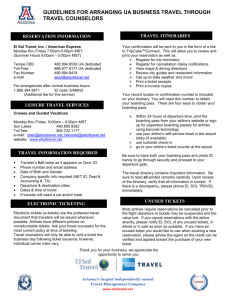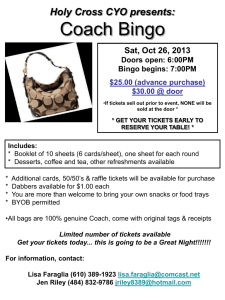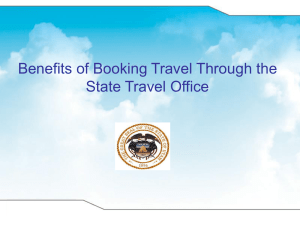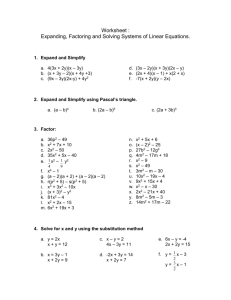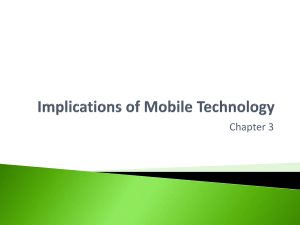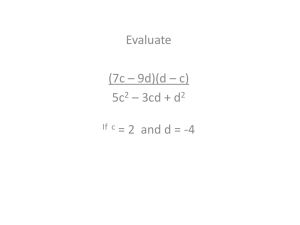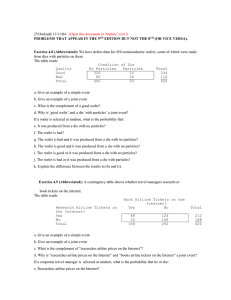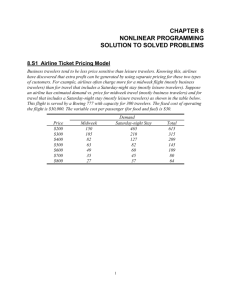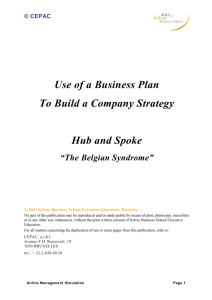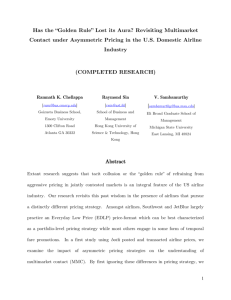What to Do If You Have Made a Wrong Decision Take responsibility
advertisement
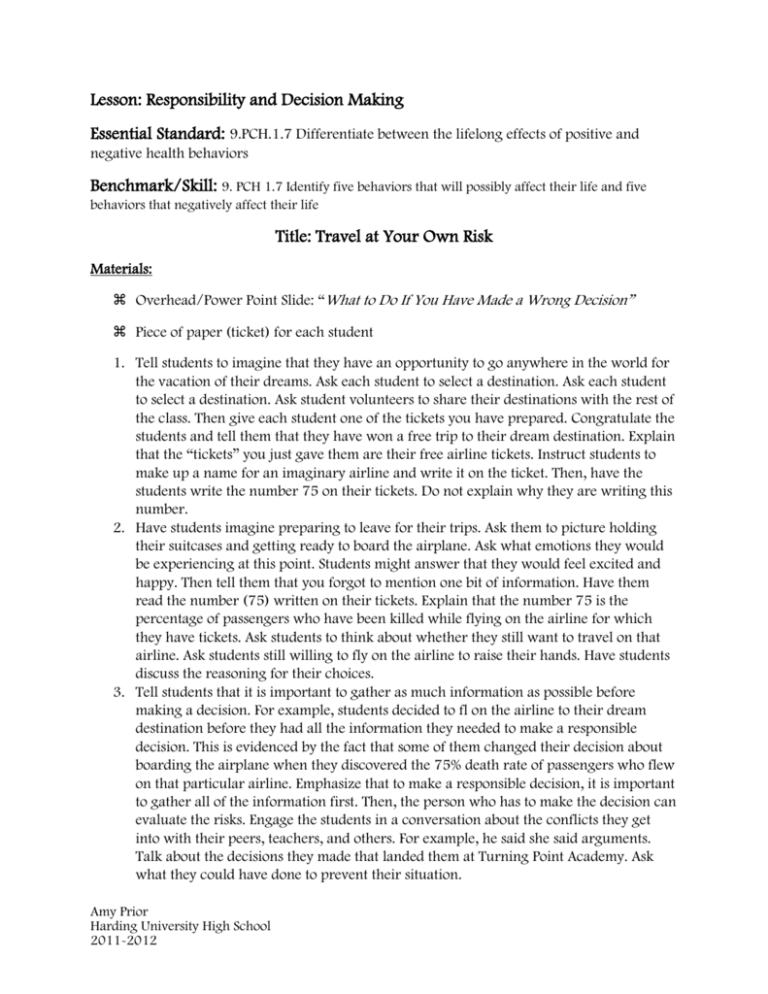
Lesson: Responsibility and Decision Making Essential Standard: 9.PCH.1.7 Differentiate between the lifelong effects of positive and negative health behaviors Benchmark/Skill: 9. PCH 1.7 Identify five behaviors that will possibly affect their life and five behaviors that negatively affect their life Title: Travel at Your Own Risk Materials: Overhead/Power Point Slide: “What to Do If You Have Made a Wrong Decision” Piece of paper (ticket) for each student 1. Tell students to imagine that they have an opportunity to go anywhere in the world for the vacation of their dreams. Ask each student to select a destination. Ask each student to select a destination. Ask student volunteers to share their destinations with the rest of the class. Then give each student one of the tickets you have prepared. Congratulate the students and tell them that they have won a free trip to their dream destination. Explain that the “tickets” you just gave them are their free airline tickets. Instruct students to make up a name for an imaginary airline and write it on the ticket. Then, have the students write the number 75 on their tickets. Do not explain why they are writing this number. 2. Have students imagine preparing to leave for their trips. Ask them to picture holding their suitcases and getting ready to board the airplane. Ask what emotions they would be experiencing at this point. Students might answer that they would feel excited and happy. Then tell them that you forgot to mention one bit of information. Have them read the number (75) written on their tickets. Explain that the number 75 is the percentage of passengers who have been killed while flying on the airline for which they have tickets. Ask students to think about whether they still want to travel on that airline. Ask students still willing to fly on the airline to raise their hands. Have students discuss the reasoning for their choices. 3. Tell students that it is important to gather as much information as possible before making a decision. For example, students decided to fl on the airline to their dream destination before they had all the information they needed to make a responsible decision. This is evidenced by the fact that some of them changed their decision about boarding the airplane when they discovered the 75% death rate of passengers who flew on that particular airline. Emphasize that to make a responsible decision, it is important to gather all of the information first. Then, the person who has to make the decision can evaluate the risks. Engage the students in a conversation about the conflicts they get into with their peers, teachers, and others. For example, he said she said arguments. Talk about the decisions they made that landed them at Turning Point Academy. Ask what they could have done to prevent their situation. Amy Prior Harding University High School 2011-2012 4. Review The Responsible Decision-Making Model. The Responsible Decision-Making Model is a series of steps to follow to assure that the decisions a person makes result in actions that Promote health, Protect safety, Follow laws, Show respect for self and others, Follow the guidelines of parents and of other responsible adults, Demonstrate good character. Discuss the six steps of the model. Tell students that steps one through four of the model help them gather information, evaluate options, and consider possible risks, in order to make responsible decisions. Ask students what they think might happen if they skip any of the steps. Students should respond that they take unnecessary risks. 5. Tell students you are going to describe a situation that requires a decision. Instruct them to listen to the following situation and then use The Responsible Decision-Making Model to make the necessary decision: Your classmate tells you she has figured out a way to access the school’s computer system from another computer. She has broken in and changed several of your classmates’ grades. She reminds you that you did not do very well on one of your recent exams. She asks you which of your grades you would like to change. What do you tell your classmate? Have the class come to consensus about the decision and reasoning behind it. 6. Tell students that teens may make wrong decisions. They may make decisions they later regret. Ask students to think about a time when they have made a wrong decision. They do not need to share what they are thinking with other students. Emphasize that a person who makes a wrong decision should not just hope that nobody finds out that (s)he has made that decision. 7. Give students the following scenario: You are with your classmates. They start making fun of one of your friends in a cruel manner. You decide to join in and make fun of this friend. You turn around and see the friend standing behind you listening to what you have said. You realize your mistake too late. Ask students what steps the teen in the scenario might take to repair the damage done by having made the wrong decision. 8. Review the overhead/power point slide What to Do If You Have Made a Wrong Decision. Tell students that making restitution is making good for any loss or damage. Point out that restitution is not always a solution. In some cases, the damage may be too great for restitution. Some wrong decisions can have serious consequences. For example, suppose the pilot of the airplane students were taking to their dream destination chooses to disregard safety guidelines and, as a result, the plane crashes. The pilot is not able to “make up” for the wrong decision. A teen who chooses to drive after drinking and kills the passenger in his care is not able to “make up” for his/her behavior. 9. Ask students to brainstorm a short explanation of how using The Responsible DecisionMaking Model as a guide might prevent them from making wrong decisions. Amy Prior Harding University High School 2011-2012 What to Do If You Have Made a Wrong Decision 1. Take responsibility and admit you have made a wrong decision. I made a mistake! I did it. It is my own fault. Don’t blame him/her… I take full responsibility. I screwed up. I regret I did that. 2. Do not continue actions based on wrong decisions. I am not going to do that again. I am going to stop this behavior NOW. That was the last time I make that mistake. Next time I will use The Responsible Decision-Making Model. 3. Discuss the wrong decision with a parent, guardian, or other responsible adult. 4. Make restitution for harm done to others. How can I make this up to you? I’ll pay to replace it. What are ways I can fix this mess? I am sorry… what can I do to make things better? Amy Prior Harding University High School 2011-2012
